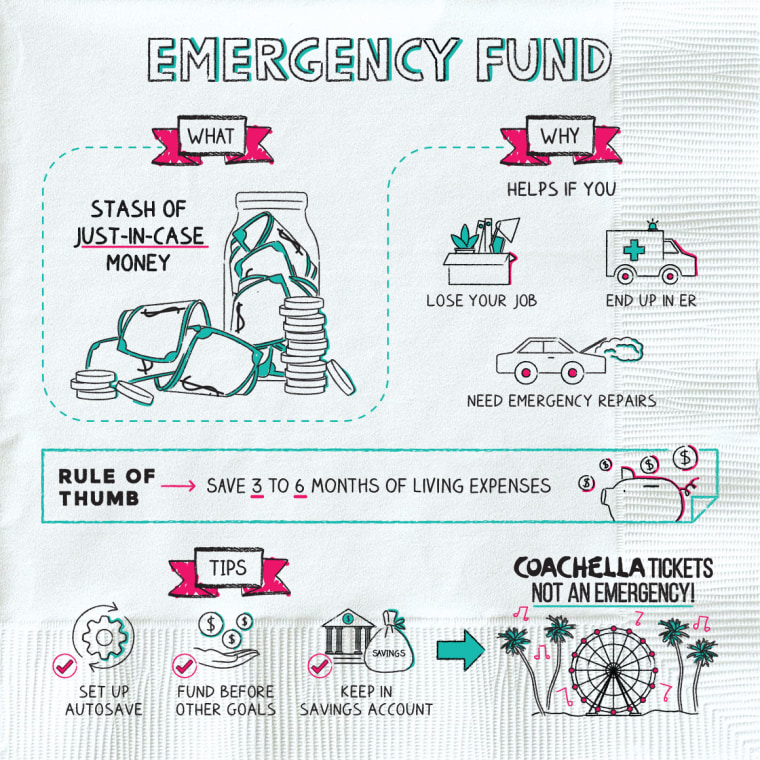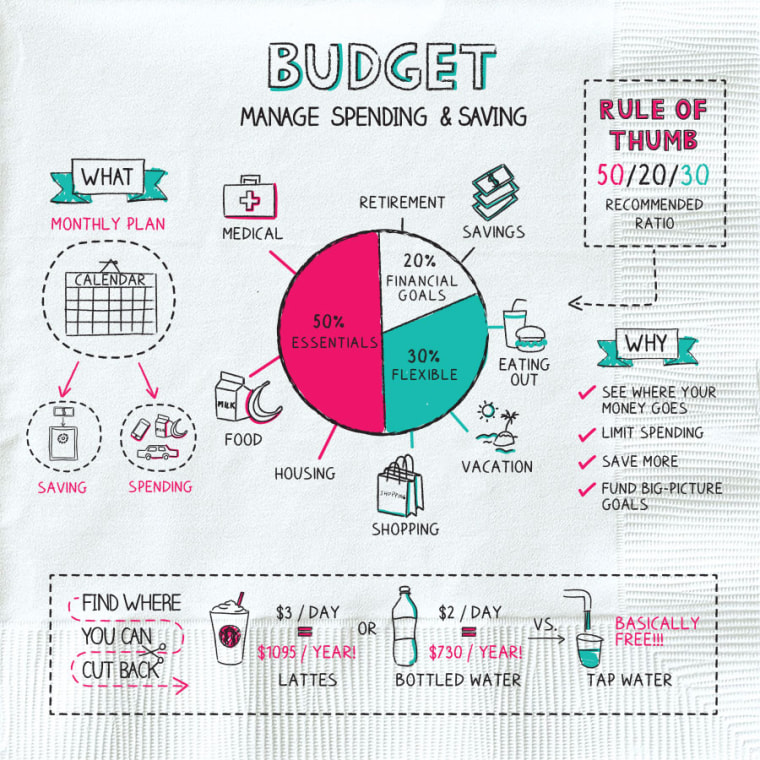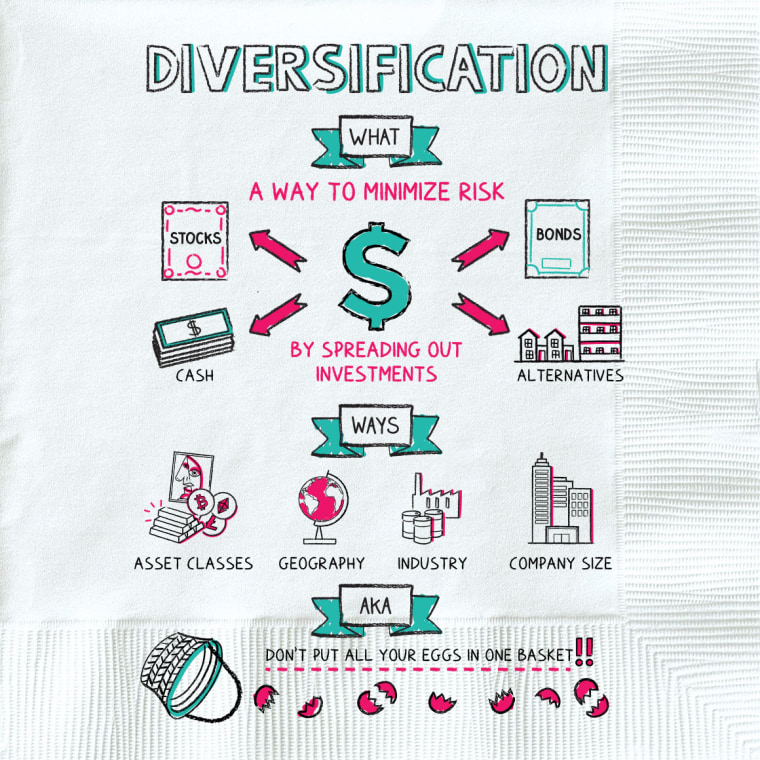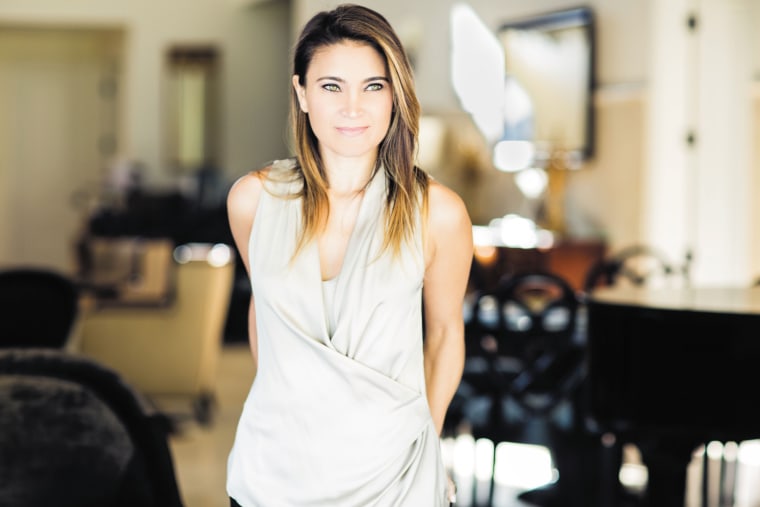Picture it: finance. If you, like 65 percent of Americans, are a visual learner, it might not be so easy. But Tina Hay, founder of Napkin Finance, a financial education company, is here to help you see.
Her new book “Napkin Finance: Build Your Wealth in 30 Seconds of Less” is like an illustrated storybook for grownups who want to learn the ins and outs of finance.
“My inspiration was my own struggle learning about money and finance,” Hay tells NBC News BETTER.

A visual learner, Hay struggled with numbers when she was studying liberal arts at Harvard University. To get a better picture of how financial concepts works, she began sketching them onto napkins. These napkin doodles became the inspiration for her book.
“The napkin works really well, not only in that it forces us to simplify complex topics, but also the way people read is actually in a square L format, so it works really well with visual learning, and with keeping things extremely simple and high level,” she says.
Here’s how Hay says you can visualize your way to financial success in 2020
First: Learn the basics
“The most important thing is knowledge is power, so you really need to understand how money works, how you can maximize your opportunities and really take control of your decisions,” Hay says.
If you don’t know much, “Napkin Finance” is a good place to start. Page after page, the book’s napkin-sized visuals break down complex financial topics into an easy-to-understand guide. The book takes readers on a visual quest, beginning with the most basic concepts of compound interest, budgeting and emergency funds, to more complicated ones like taxes, credit, investing, retirement planning and understanding cryptocurrencies.

Second: Have a plan
If you want to be financially independent, educating yourself is just the beginning, says Hay — you also need to have a plan.
“The worst thing you can do is not be active, not be proactive, not understand where you stand, not have a financial plan, and not take stock of where you are,” she says.
Determine how you will pay off debt
If your goal is to pay off debt, a good idea is to look at what you owe and “break it down into small, bite-sized, manageable steps,” says Hay.
“Everything from either paying off higher balances first or tackling smaller balances, closing accounts — that enables people to build momentum, stick to a plan, and gives a psychological boost,” she says.
The “wealth snowball”, “avalanche method” and the lesser-known “spiral method” are a few popular strategies for paying off debt. Which you choose will depend on your unique needs.
Figure out a budget
Developing a budget — a step covered in the early chapters of “Napkin Finance” — is essential to paying off debt and sticking to a plan, says Hay. The 50-20-30 rule is a reliable budget you can adjust to your needs, according to Hay.

While everyone’s plan will be different, the goal “is to move from a place of being overwhelmed to a place of confidence and empowerment,” says Hay.
Have a growth mindset
When we become financially literate, we empower ourselves with a mindset based on financial growth rather than fear — an emotion that tends to hold us back from success, according to Hay.

“You can either have the vicious cycle of money and finance where you don’t really understand things and then the decisions are based on fear, and not on growth, or you can have a virtuous cycle where you can take control of your finances and watch your money grow and build a lifetime of financial well being,” she says.
MORE FROM BETTER
- Want to get out of debt and save money? Try the 50/20/30 rule
- I hired a 'trainer' to get my finances in shape — and this is what I learned
- How to create an emergency fund in just 90 days
- These changes to your 401(k) can boost your retirement savings
Want more tips like these? NBC News BETTER is obsessed with finding easier, healthier and smarter ways to live. Sign up for our newsletter and follow us on Facebook, Twitter and Instagram.

